Principal Investigator

Dr. Jim Rivers
Jim received his B.S. at the University of Massachusetts (Amherst) where he studied song variation in Hermit Thrush song for his honors thesis. Shortly thereafter he worked in Argentina before moving to Kansas State University to conduct M.S. work looking at avian use of wetlands within agricultural settings. From there, he headed to the University of California, Santa Barbara for a Ph.D. studying the brood-parasitic Brown-headed Cowbird.
His research program at OSU is centered on understanding the behavioral, physiological and ecological mechanisms that are linked to animal vital rates. Members of his lab group work on a variety of organisms, including forest-nesting seabirds, woodpeckers, and insect pollinators, and much of the research they undertake has implications for applied management and conservation. [CV] [GoogleScholar] [ResearchGate]
Ph.D. Students

Mark Kerstens
Mark earned a B.S. in Biology from the University of Massachusetts, Amherst. His honors thesis studied how overwintering birds in mixed-species flocks respond to pishing vs. chickadee mobbing calls. He has since spent several years on avian point count and nest monitoring projects in Oregon punctuated by teaching outdoor education in southern California. His main research interests are how to manage forests both before and after wildfires to provide habitat for cavity-nesting birds, and to use these species as indicators for ecosystem health. For his M.S. he studied Black-backed Woodpecker vital rates in fire-prone landscapes, and he will be expanding work on that species for his Ph.D. When not chasing birds, Mark likes to spend his time mountain biking, climbing, backcountry skiing, or sewing his own outdoor gear.
M.S. Students
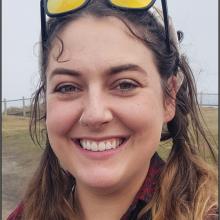
Ashley Mertens
Ashley earned a Bachelor's Degree in Biology from Eastern Washington University in 2020. Upon graduation, she worked on a wide variety of field-based research projects including grizzly bear hair snaring, raptor trapping and migration counts, long-term population monitoring of ground squirrels, and multiple projects concerning bumblebees in Idaho and Oregon. Her primary research interest is native bee ecology and she hopes to elucidate how different disturbance events impact habitat availability for native bee communities. Her M.S. thesis delves further into this line of inquiry and she will be looking into how different forest management practices impact native bee communities in the Malheur National Forest of eastern Oregon.

Lily Bright
Lily earned a B.S in Organismal Biology from Portland State University, and a certificate in Geographic Information Systems from Central Oregon Community College. After graduating, she worked as a field technician studying a variety of species including spotted owls, bull trout, and Trinidadian guppies. For her M.S. she will be investigating cavity-nesting bee ecology in intensively managed forests. In her free time, she enjoys snowboarding, yoga, horseback riding, and crafting.
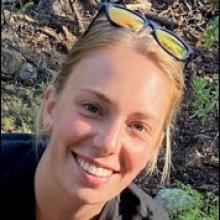
Lauren Gramberg
Lauren earned her B.S. from University of Massachusetts (Amherst) in 2018. While studying abroad in Tanzania, her directed research thesis focused on the occupancy of large carnivores within Lake Manyara National Park. Since then, she has worked on a range of projects within the western U.S. and has developed a strong interest in habitat ecology. Her master's work will be focusing on the influences of invasive grasses and wildfire on sagebrush pollinators. She is co-advised by Jonathan Dinkins in the Animal & Rangeland Sciences Department.
Undergraduate Research Assistants
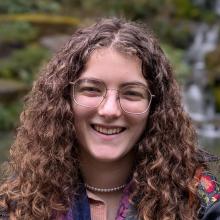
Rose Forcier
Rose is an undergraduate student considering an Honors degree in Biology or Microbiology. In the lab, she is studying how temperature impacts offspring development and emergence of blue orchard bees. In her free time, she enjoys going on walks, cooking, and spending time with friends.
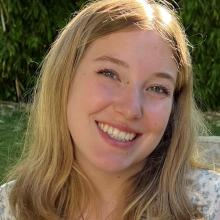
Ella Broach
Ella is an undergraduate pursuing a degree in Zoology with a minor in Fisheries and Wildlife. She is currently assisting in the lab with wood-boring beetle specimen identification. Ella is interested in wildlife ecology and conservation, and in her free time she enjoys going on hikes, volunteering at the local animal shelter, and painting.
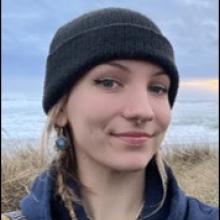
Makena Westermeyer
Makena is an undergraduate majoring in Natural Resources and specializing in Fish and Wildlife Conservation. Her love for birds led her to join the lab and she helped code Black-backed Woodpecker provisioning rates in burned and unburned forests. In her free time, enjoys hiking, birding, cooking, and fishing.
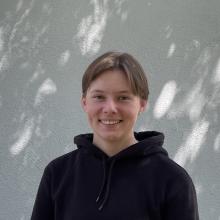
Ari Curran
Ari is an undergraduate student majoring in Natural Resources, with a concentration in Fish and Wildlife conservation. They are interested in community and landscape-scale approaches to wildlife conservation, especially in working or mixed-use lands. In the lab, they are assisting with wood-boring beetle identification. In their free time, they spend many hours hiking, painting, making pottery, and writing.
Former Postdoctoral Research Associates
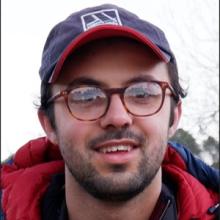
Dr. Gianluca Cerullo
Gianluca is a conservation scientist interested in how to meet future timber demands at the least cost to the planet. Much of his research considers how to navigate trade-offs between biodiversity, climate and economic outcomes. To do this, Gianluca combines detailed field surveys, datasets and ecological theory with landscape-level modelling. Gianluca is particularly interested in how conservationists can assess the outcomes of alternative production approaches and, in turn, influence landscape-scale management practices. Gianluca is co-advised with Dr. Matt Betts.
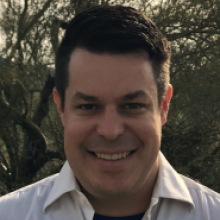
Dr. Jonathon Valente
Jonathon earned a B.A. from Miami University where he majored in Zoology and Environmental Science. He also received a M.S. in Wildlife from Louisiana State University before attending Oregon State University where he received a M.S. in Statistics and a Ph.D. in Forest Ecosystems and Society. He also was a research fellow with the Smithsonian Migratory Bird Center where he helped investigate the benefits of land-sparing vs. land-sharing forest conservation models in tropical coffee-growing regions. Jonathon is broadly interested in how landscape composition and patterns influence avian habitat selection, movement, behavior, and population dynamics. His work in the lab focused on identifying drivers of spatial distribution and population dynamics of Marbled Murrelets in the Oregon Coast Range. [Jonathon's website]
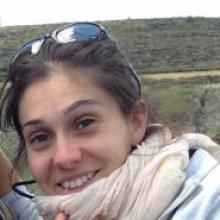
Dr. Marie-Sophie Garcia-Heras
Sophie received her B.S. at the University Aix-Marseille (France) and followed this up with a MSc in Ecology and Biodiversity Management. She conducted her master’s research at the Biological Station of Doñana (Spain) where she investigated the overall effects of the supplementary feeding station in the breeding population of the Canarian Egyptian Vulture. From there, she headed to the FitzPatrick Institute of African Ornithology at the University of Cape Town (South Africa) for a PhD, where she studied Black Harriers, an endangered bird of prey endemic to southern Africa. She also used an eco-toxicological and eco-physiological approach to assess environmental contamination on adults and nestlings. Sophie worked on the Oregon Marbled Murrelet Project evaluating space use, spatial movements, and breeding ecology of the Marbled Murrelet.
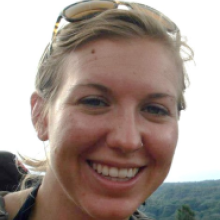
Dr. Sara Galbraith
Sara earned a B.A. in biology from St. Olaf College and a Ph.D. in entomology from the University of Idaho and the Tropical Agricultural Research and Higher Education Center (CATIE) in Costa Rica. Her research is focused on understanding variables that impact native and managed bee populations worldwide. As a doctoral student, Sara studied the impact of land use change on native and managed bees in northwestern Costa Rica as an NSF IGERT and USAID Borlaug fellow. Her work in the lab examined the impact of wildfire severity and post-fire management on native bees and pollination services in Oregon, as well as characterizing the bees that are found in regenerating intensively managed forests. [Sara's website]
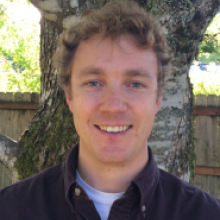
Dr. Joe Northrup
Joe is a conservation biologist broadly interested in how human activities affect wildlife behavior and populations. Much of his research focuses on the spatial ecology and movement of wildlife and he attempts to combine contemporary statistical techniques with ecological theory to better understand the drivers and consequences of space-use and movement patterns. Joe is most interested in conducting research that informs natural resource management and can be used in mitigation planning. He worked in the lab on the Oregon Marbled Murrelet Project with a focus on analyzing Marbled Murrelet occupancy using existing datasets.
Former Program Manager
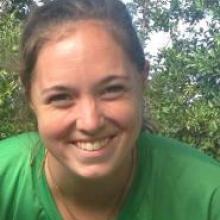
Jenn Bailey Guerrero
Jenn earned her B.S. from the University of Northern Colorado and an M.S. in Biological Oceanography from the University of Rhode Island, where her research focused on molecular ecology of zooplankton in the Bering Sea. Following her graduate work, shespent several years studying avian nesting behavior in a variety of habitats, from the Peruvian rainforest to the coastal regions of the Pacific Northwest. Jenn specialized in public outreach working as a science communicator in the Peace Corps and for the National Pesticide Information Center before she worked on the Oregon Marbled Murrelet Project from 2017-2022.
Former Faculty Research Assistants
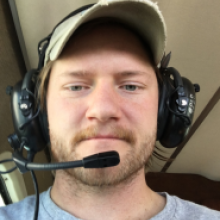
Jon Dachenhaus
Jon received his B.A. in Biology and Geography from Macalester College in 2013; his research interests include examining environmental factors which affect seabird breeding success in the wake of uncertain climate change. He has worked in a variety of field technician positions in Florida, Minnesota, California, Louisiana, and the Galapagos. During 2017, Jon joined the Oregon Marbled Murrelet Project as a general technician and then returned as the lead aerial technician in 2018 before working on the project full time from 2019-2022.
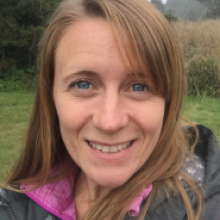
Lindsay Adrean
Lindsay received her B.S. from James Madison University and her M.S. in wildlife science from Oregon State University where her research focused on Caspian Tern predation of juvenile salmonids in San Francisco Bay. She then spent several years with the Oregon Department of Fish and Wildlife working on avian predation issues and implementing the Oregon Conservation Strategy, as well as completing a research fellowship studying waterbirds along the coast of Sonora, Mexico. Lindsay worked on the Oregon Marbled Murrelet Project from 2017-2021.
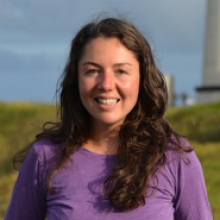
Cheryl Horton
Cheryl earned her B.S. in natural resources from Cornell University and an M.S. in wildlife science from Oregon State University. Her graduate research in the OSU Seabird Oceanography Lab addressed top-down impacts on colonial nesting seabirds over a range of spatio-temporal scales in Oregon. She spent several years working with the U.S. Fish and Wildlife Service, including at Monomoy National Wildlife Refuge studying Federally threatened piping plover and rufa red knots. She worked on the Oregon Marbled Murrelet Project from 2017-2018. [ResearchGate] [Seabirds.net]
Former Research Technicians
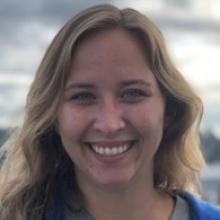
Kaitlyn Osborne
Kaitlyn is an OSU alumnus, having graduated in 2021 with her B.S. in Integrative Biology with a Marine Biology focus. Her previous research has been centered around the trophic dynamics of juvenile fish in the Gulf of Alaska and the northern California Current ecosystems. Kaitlyn worked on the Oregon Marbled Murrelet Project to identify key prey taxa brought to the nests during chick provisioning events.
Former Ph.D. Students
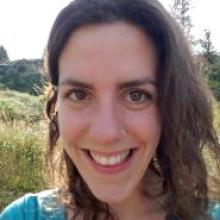
Rachel Zitomer
Rachel earned her B.S. in Ecology from Humboldt State University in 2013 and worked on a range of research and applied conservation projects for several years, including research on evolution of seed beetle behavior, population genetics of five-needle pines, and restoration of threatened ecosystems in the Willamette Valley and East Cascades. Rachel is broadly interested in how land management practices affect native pollinator and plant communities and developing pollinator conservation strategies on working lands. Her dissertation research focused on how native bee communities and bumble bee foraging ecology in coniferous forest landscapes are shaped by intensive forest management.
Former M.S. Students
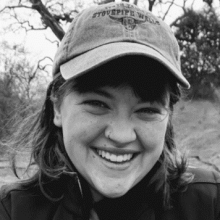
Megan Sampognaro
Megan earned her B.S. at California State University Monterey Bay in Environmental Science and Ecology. There she studied bryophyte responses to human disturbance in dry streams. As a M.S. student she will be investigating how native bee communities are influenced by fire-reduction practices in managed forest landscapes. In her free time she enjoys science illustration, hiking and foraging.
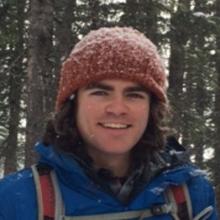
Ethan Woodis
Ethan has a Bachelor's Degree in Environmental Studies from Pacific University. Since 2007 he has worked with wildlife research and conservation groups in Colorado and the Pacific Northwest studying a variety of mammals, amphibians, insects, fish, soil microbes, raptors and seabirds. He joined the Oregon Marbled Murrelet Project full-time in 2019 and starting Fall 2022 will be starting his M.S. thesis work looking at murrelet nest success and nest-site selection. When he isn't working he enjoys backpacking, traveling and playing his saxophone. Ethan is co-advised with Dr. Matt Betts.
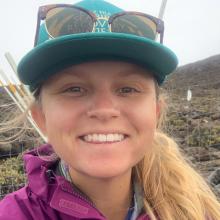
Cece Frisinger
Cece earned her bachelor’s degree in Ecology and Evolutionary Biology from the University of Colorado Boulder. Following her undergraduate degree, she worked on several field-based research projects that monitored terrestrial and aquatic turtle species in North Carolina and Georgia. She then worked in Hawaiʻi, where she joined a project focused on the conservation of seabirds and their habitats in Maui Nui. For her M.S. thesis, Cece studied foraging and provisioning behaviors of the Marbled Murrelet.
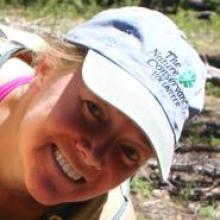
Janel Lajoie
Janel earned her undergraduate degree from Southern Oregon University and studied Black-backed Woodpecker habitat use in Crater Lake National Park. For her thesis, she worked with Black-capped Chickadees to understand how individuals vary in their use of supplemental feeders. She also conducted a field experiment to assess the extent to which individuals undergoing energetic challenges make use of supplemental food.
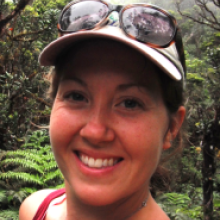
Amy Barry
Amy completed her undergraduate degree in Zoology at Oregon State University and began traveling and exploring many areas of biology. After stints working in Nebraska, Hawaii, California, and Oregon, she settled in at OSU to pursue her passion in avian conservation and research. Her thesis work assessed long-term changes in the characteristics of experimentally-created snags and the bird communities which depend on these resources for foraging and nesting substrates.
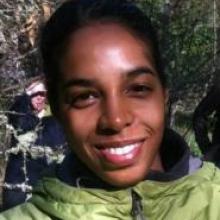
Kristin Jones
Kristin received her B.S. in the honor’s program at Washington State University in wildlife ecology with a minor in French language. Her training is in both the human dimensions of natural resource science and wildlife ecology. She is broadly interested in the effects of anthropogenic land use and management on terrestrial ecosystem ecology. More specifically, she is interested in the climate- and resource-mediated effects of vegetation on the population dynamics of wildlife (especially avian species). Her thesis work examined the effects of intensive forest management practices on air temperature and the reproductive success of the House Wren (Troglodytes aedon), a cavity-nesting songbird, in early-successional forests.
Former University Honors College Students

Hallie Perlman
Hallie was an undergraduate at OSU majoring in Zoology; prior to her time at OSU, she was a student at Cal Poly San Luis Obispo. In the lab she undertook an honors thesis investigating blue orchard bee nesting ecology and reproductive output in light of expected future climate change.

Lucas Parvin
Lucas was a zoology major with minors in chemistry and psychology who is interested in how animal behaviors affect ecology in a multitude of environments. Before he joined the lab he was involved in the URSA Engage Program at OSU where he analyzed dune sand samples for nitrate concentration. We also worked in the Oregon Sea Grant Summer Scholar program where he helped with education outreach and conducted fieldwork at the South Slough National Estuarine Research Reserve. For his thesis, he investigated how native bees used grass seed fields in the Willamette Valley.
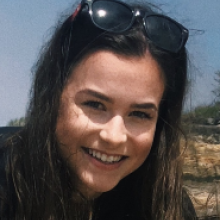
Nicole Bell
Nicole was an undergraduate at OSU studying Environmental Sciences. Her honors thesis was focused on understanding how wildfire severity influence pollen collection by the blue orchard bee.
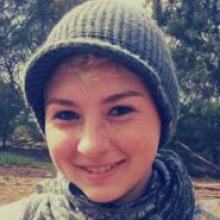
Braelei Hardt
Braelei obtained her B.S. in Fisheries and Wildlife Sciences at OSU while focusing on avian research and statistical methods. Her Honors College thesis explored the physiological and behavioral aspects of stress in Tachycineta swallows. She is also interested in applied avian evolutionary ecology, ecosystem services, and conservation physiology.
Former Undergraduate Research Assistants
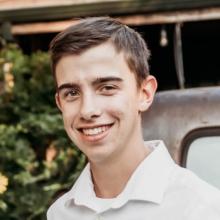
Aiden Finegan
Aiden is an undergraduate pursuing a degree in Natural Resources with an ecological restoration option. Through the CoF Mentored Employment Program, he is currently assisting in the lab with bee specimen processing, comparing native bee communities in different managed forest conditions. Aiden is primarily interested in conservation design and restoration ecology implementation, but in his free time, he enjoys reading, running, and spending time with his family.
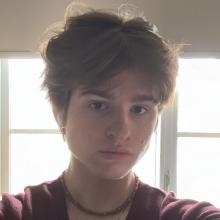
Kai Blurton
Kai is an undergraduate majoring in Microbiology. He has a lifelong obsession with exploring the world around him, micro and macro. This innate curiosity led to an interest in research, ultimately leading him to join the lab where he is assisting on a study of the native blue orchard mason bee. In his free time, he enjoys hiking, biking, camping, and seeing/doing new things.
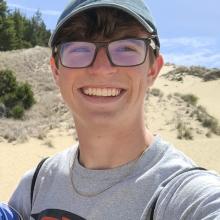
Owen Sansburn
Owen is an undergraduate student pursuing a degree in Natural Resources specializing in ecological restoration. In the lab he is working on categorizing native bee species as part of a project to assess the influence of invasive European grasses on bee communities. Outside of the lab he enjoys hiking, camping, exploring the outdoors and watching basketball.
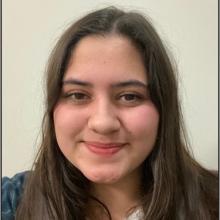
Sophia Gutierrez
Sophia is an undergraduate student pursuing a degree in STEM. She is interested in wildlife conservation, ecology and growing her knowledge in the field of fisheries and wildlife. She is currently assisting on research regarding native bee populations and how they are impacted by fire-reduction practices as a part of the STEM Leaders Program at OSU. In her free time, she enjoys exploring the outdoors, crafting, cooking/baking, and spending time with animals.
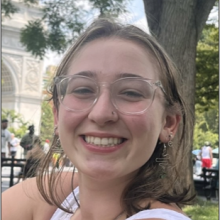
Bayly Kahle
Bayly is an undergraduate student at OSU pursuing a B.S in Fisheries, Wildlife, and Conservation Science, with a minor in Spanish. She is interested in ecosystem conservation and behavioral ecology. In the lab she is working on wood boring beetle identification and cataloging. In her spare time Bayly is hanging around in the forest, tossing a frisbee around with friends, or gardening with OSU’s Organic Growers Club.
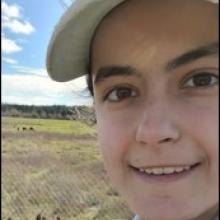
Maria Alvarez-Barroso
Maria was an undergraduate at OSU majoring in Environmental Science with an option in applied ecology. She has a passion for birds, nature, and research and was ecstatic to be part of this lab group. Through the URSA Engage Program she worked to quantify black-backed woodpecker chick provisioning.
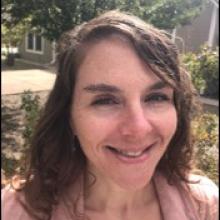
Melissa Waltiere
Melissa transferred from Northern Arizona University in Flagstaff, Arizona to OSU in Fall 2023. She was studying pre-veterinary medicine and biology in preparation for veterinary school, and worked as part of the URSA Engage Program in the lab studying potential food resources of the Black-backed Woodpecker.
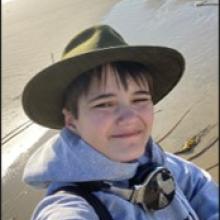
Christoph Anderson
Christoph was in the Natural Resources program and interested in the management of organic disturbances. He worked in the lab through OSU’s STEM Leaders Program, helping determine how wildfire affects pollinator populations. He hopes to eventually work with the NRCS on mitigating the effects of invasive species on riparian ecosystems.

Steven Cleasby-Mayeda
Steven was an undergraduate student at OSU majoring in zoology who was involved in the URSA Engage Program. He is interested in conservation, fieldwork, and documentary filmmaking. His goal is to conserve natural areas by developing economically viable methods of conservation and help spread appreciation for our flora and fauna through documentaries and educational videos to spread awareness of critical habitats that are being lost.

Emelia Ferguson
Emelia was an undergraduate student majoring in Biology with an ecology option and is interested in wildlife ecology and conservation. Emelia worked in the lab to quantify beetles as a food source for Black-backed Woodpeckers as part of the URSA Engage Program.
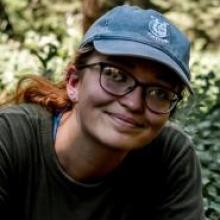
Weylin Crouch
Weylin received a Natural Resources Technology technical degree from Mount Hood Community College doubling in Forest Resources and Wildlife Resources, before transferring to OSU where they worked on a Natural Resources Ecology degree. They spent the summer between schools working with the ODFW and Forest Service as a Wildlife Conservation Strategy Intern surveying White-headed Woodpecker foraging ranges in Eastern Oregon. Weylin joined the lab as part of the STEM Leaders Program.
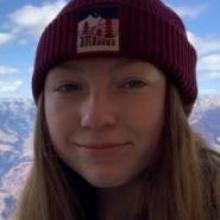
Kate Hassett
Kate was an undergraduate student pursuing a B.S. in Natural Resources, with a minor in Fisheries and Wildlife Science. She is interested in forest and wildlife ecology and conservation. Kate worked in the lab researching provisioning rates of Black-backed Woodpeckers in burned and unburned forest landscapes as part of the URSA Engage Program.
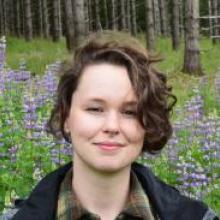
Bella Padgett
Bella received her AS and AAOT from Portland Community College and then transferred to OSU where she pursued a B.S. in biology with an ecology option and a chemistry minor. She is interested in forest ecology, marine ecology, and environmental law with a focus on species conservation. She was a 2021 SURE Scholar and worked on a project examining how native pollinators utilize foraging resources across successional gradients in early seral managed conifer forests.

Mina Everingham
Mina obtained an Associates in Biology and an Associates in LAS Natural Science from College of the Siskiyous and worked at OSU on her Bachelor's degree in Biology with an option in Pre-Veterinary Medicine and a minor in Fisheries and Wildlife Sciences. Mina worked with the lab cataloging bee life-history traits to prepare a useful database.

Mallory Mead
Mallory was an undergraduate at OSU majoring in horticulture with the sustainable horticulture option. She is interested in ecology, agricultural food production and pollinator conservation. Mallory worked in the lab on a project evaluating the effects of climate change-simulated temperatures on mason bee vitality and reproduction as part of the URSA Engage Program.
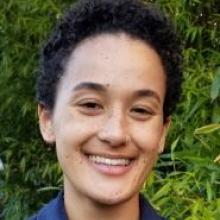
Rhea Sellitto
Rhea was an undergraduate at OSU majoring in biology and specializing in ecology. They are interested in exploring the field of ecology and their passion for bees. They worked on the Forest Pollinator Health project in the lab and then pursued a project with the SURE Science award looking at correlates of bee health within intensively managed forests.
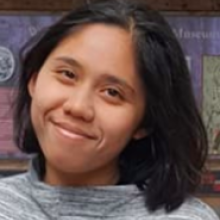
Nuha Zarifah
Nuha was an undergraduate at OSU majoring in Accounting and Sustainability. A transfer student from INTI International University in Malaysia, she is interested in both the business and the scientific world. As a business student, she strived to pursue her interest in bees, trees, and the environment by engaging in research and plant-insect projects. Nuha worked in the lab as part of the URSA Engage Program at OSU.
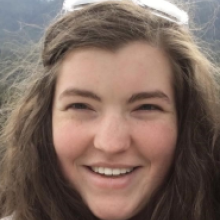
Giulia Wood
Giulia was an undergraduate at OSU studying biochemistry and molecular biology and environmental science. She worked in the lab on a project examining how mason bee reproduction was influenced by intensive forest management practices as part of the URSA Engage Program.
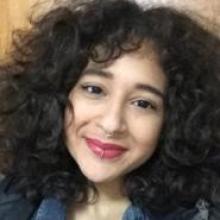
Kendra DelToro
Kendra was an undergraduate at OSU majoring in ecology and specializing in entomology. Her past research involves honeybee nutrition with the Sagili lab, and ground beetle sperm conjugation with the Maddison lab. She loves bugs, loves research, and worked in the lab through via an URSA Engage award that allowed her to pursue an independent project focused on how wildfire severity is linked to offspring production and survival of blue orchard bees.
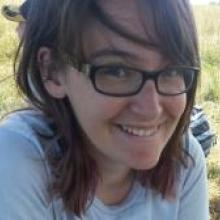
Codey Mathis
Codey was involved on wide range of projects during her time as a student at OSU, many of which were focused on the behavioral and physiological response of co-occuring Tachycineta swallows. In addition, she headed up a crew that investigated how bee communities are impacted by biofuel harvest treatment in regenerating forests of the western Cascades.
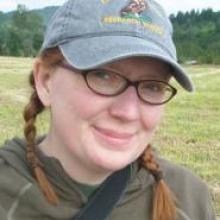
Gretchen Newberry
Gretchen was an undergraduate at OSU and got involved in the lab for several summers working on a range of Tachycineta swallow projects, including co-leading a study that compared nestling diet between Tree and Violet-green Swallows. [Gretchen's website]
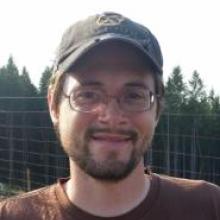
Niels Garlick
The work that Niels undertook in the lab during his undergraduate tenure at OSU was quite diverse. On the avian side of things he headed up a study of habituation in swallows and helped to quantify the demographic response of sparrows to intensive forest management practices in the Oregon Coast Range. In addition, he has helped to quantify bee response to biofuel treatments in regenerating forests.